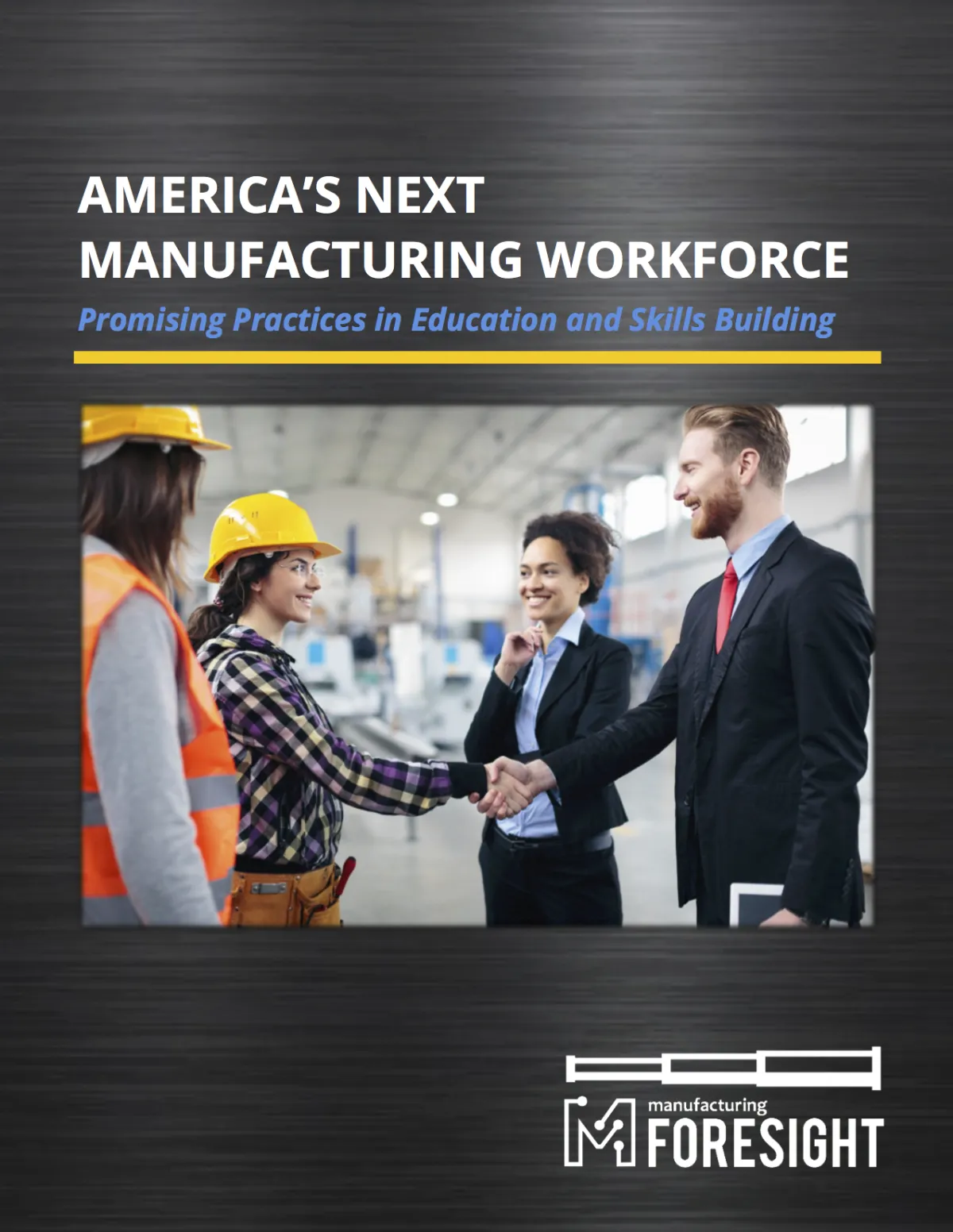MANUFACTURING WORKFORCE DEVELOPMENT
OUTCOMES
IMPACT
This report summarizes a sampling of replicable and scalable promising practices being pursued to ensure that America builds an educated, skilled, and ready workforce. MForesight has not endorsed any particular product or method in presenting these promising practices.

KEY ASPECTS
This report consists of a compilation of over 30 programs and initiatives.
The group identified five governing themes that define areas of need and innovation in education and workforce programs, and define the sections of the report:
1. Engaging Students in STEM & Manufacturing: Creating a Manufacturing Mindset
2. Building the Technology-Savvy Workforce: Creating an Ecosystem for Success
3. Targeting Special Populations: Capturing the Full Strength of Our Workforce
4. Re-designing University Curriculum: The Hard Science of Engineering is No Longer Enough
5. Involving Manufacturers in Education Reform: The Key to Successful Solutions
DISSEMINATION
The report was released just prior to the 2017 MForesight National Summit. Printed copies were available for attendees which included members of industry, academia, and government.
The Education & Workforce Development Working Group continued its work to translate the key characteristics of these promising practices into policy and investment guidelines for government, industry, and educational enterprises that will support efforts to bring such practices to scale.
OVERVIEW/MOTIVATION
The practices presented in this report demonstrate some of the most promising approaches for education and skill building of America’s new manufacturing workforce. These practices were selected by a panel of experts from business, government, and education who served on the MForesight Education and Workforce Development Working Group (EWD). These individuals are known for their leadership in and access to key public-private networks engaged in critical education and workforce development initiatives, including the:
1. public-private workforce investment system;
2. secondary and postsecondary career and technical education systems;
3. community and technical college systems, with particular emphasis on the 175 centers focused on advanced technologies;
4. Manufacturing Extension Partnership system;
5. economic development system at the state and local levels;
6. university systems, including R1’s, state, public and land-grant universities;
7. higher education systems broadly defined; and
8. innovation institutes/centers associated with institutions of higher education.
The EWD adopted the following mission of MForesight to guide their selection process:
MForesight will articulate the principles underlying policies and practices to ensure an educated, skilled, and ready U.S. manufacturing workforce, competent and confident in using state-of-the-art and emerging technologies and new materials and processes in advanced manufacturing.
CONTRIBUTORS
EDUCATION & WORKFORCE WORKING GROUP
Emily Stover DeRocco
Director, Education & Workforce, LIFT
Director, National Network of Business & Industry Associations
Maria Kneisler Flynn
President
Jobs for the Future
J. Craig McAtee
Executive Director
National Coalition of Advanced Technology Centers
James Woodell
Vice President for Innovation and Technology Policy
Association of Public and Land-Grant Universities
Jennifer Hagan-Dier
Director
Tennessee Manufacturing Extension Partnership
Timothy V. Franklin, Ph.D.
Vice President & Chief Operating Officer
New Jersey Innovation Institute
Eileen Pickett
EPickett Consulting
Former Executive Vice President, Economic Development, Greater Louisville Inc.
Jan Bray
Bray Strategies
CEO of Association for Career & Technical Education for 12 years
Joel Simon
Senior Vice President
Council for Adult & Experiential Learning
Ryan Miller
Associate Director for External Operations
Center for Manufacturing Excellence
University of Mississippi
